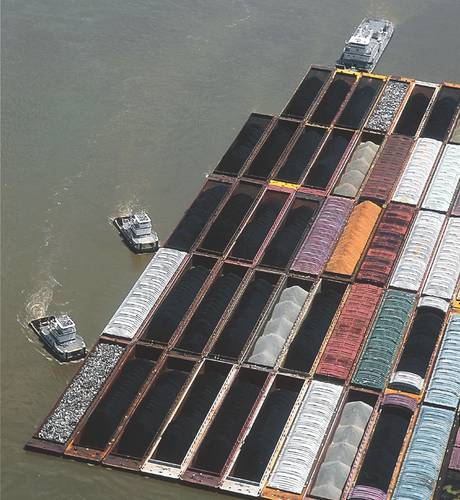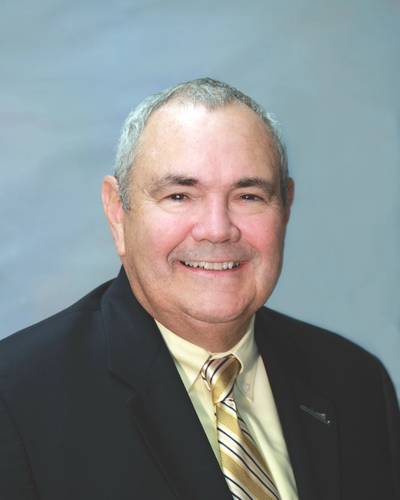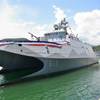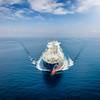The start of a new year often brings change, but in the nation’s capital, 2017 means a new President and Administration, and a new Congress. Waterways Council, Inc.’s objective remains the same as it has since our start in 2005: to advocate for a modern, efficient and reliable inland waterways transportation system. For WCI, achieving this means working from our “three-legged advocacy stool” approach to educating these new Washingtonians through direct lobbying, stakeholder support and outreach, and media relations.
As the 115th Congress works on its immediate issues of healthcare and tax reform, the framework for an infrastructure package is being discussed as well. Ahead, the Trump Administration is expected to announce a plan for infrastructure improvements.
As that moves forward, WCI’s goal will be to advocate strongly for infrastructure investment for the inland waterways transportation system armed with key facts. America’s inland waterways transportation system is comprised of 12,000 miles of navigable waterways in 38 states. Last year alone, this system moved more than 600 million tons of freight valued at $250 billion over what is, mile-for-mile, the most fuel efficient, safest, and environmentally responsible mode of goods transport.
Rivers represent the silent “R” in a national transportation policy that has, in recent decades, focused on Roads, Rails, and Runways. Historically, however, the U.S. has always recognized the vital contribution that waterborne transportation makes to overall prosperity. Public expenditures to maintain navigation channels and build related infrastructure were among the nation’s earliest investments and similar investments are just as critical to an efficient 21st century freight system.
But unfortunately, in recent times, waterways spending has declined and our waterways facilities are deteriorating. Congress has moved to correct this underinvestment, authorizing 25 modernization projects valued at $8.7 billion. These initiatives are to be built by the U.S. Army Corps of Engineers through an existing public-private partnership between the public sector and those who commercially use the locks and dams. While many entities gain from these projects, barge operators are the only direct contributors to the Inland Waterways Trust Fund through their payment of a 29-cent-per-gallon diesel fuel tax. Typically, the trust fund provides 50% of construction funding, while the remaining 50% comes from general treasury funds.
In 2014, the National Waterways Foundation commissioned a study by researchers at the Universities of Kentucky and Tennessee that analyzed the economic impacts of preserving the current inland waterways transportation system and expediting the construction of the Congressionally-authorized lock and dam modernizations so that they would be completed in 10 years rather than the current estimate of more than 20 years. The study results suggest that preserving the current system is critical, helping to sustain nearly 541,000 full-time jobs and $21 billion in annual incomes. Moreover, according to the study, expediting the modernization so that it mirrors President Trump’s 10-year timeframe will hasten the addition of another 35,000 jobs to this total, add $14 billion in additional income over 10 years, and would actually decrease overall system construction costs.
Recognizing President Trump’s stated interest in Public-Private Partnerships and priority for formulating a national infrastructure policy, there is a way to create a sustainable advantage to American industries that ship their products on our waterways and, by increasing the reliability and efficiency of the waterways, make American industry more competitive at home and in the world market:
Allocate up to $8.7 billion of infrastructure funds over 10 years for the construction of capital projects already authorized by Congress to modernize the inland waterways transportation system.
Cost-share this investment with the Inland Waterways Trust Fund at a temporary rate of 25% IWTF and 75% General Funds as part of the Trump Administration’s infrastructure initiative.
This proposal would expedite the completion of up to 25 modernization projects located throughout the United States, particularly throughout the nation’s heartland in states like Pennsylvania, Ohio, Kentucky, Missouri, Tennessee and Illinois. These projects are in states that benefit farmers, manufacturers, and the men and women of the construction trades.
Projects that could be built in the next 10 years include the Chickamauga Lock and Dam (Tennessee River/ TN); Kentucky Lock and Dam (Tennessee River/KY); Lower Monongahela Locks and Dams 2, 3, and 4 (Monongahela River/PA); and Olmsted Locks and Dam (Ohio River/KY).
Projects authorized and awaiting construction include Brazos High Island (Gulf Intracoastal Waterway/TX); Brazos River to Port O’Connor (Gulf Intracoastal Waterway/TX); Calcasieu Lock (Gulf Intracoastal Waterway/LA); Dashields Lock (Ohio River/PA); Emsworth Lock (Ohio River/PA); Inner Harbor Navigation Canal Lock (Mississippi River/LA); LaGrange Lock (Illinois River/IL); Montgomery Lock (Ohio River/PA); Peoria Lock (Illinois River/IL); and the Upper Mississippi River Lock and Dam 20, 21, 22, 24 and 25 (Mississippi River).
There are also major rehabilitation projects ready for construction. These include the Brandon Road Lock and Dresden Island (Illinois River/IL); Greenup Lock (Ohio River/ OH & KY); J.T. Myers Lock (Ohio River/IN & KY); Starved Rock (Illinois River/IL); T.J. O’Brien (Little Calumet River/IL); and LaGrange Lock (Illinois River/IL).
It is time to reinvest in infrastructure that keeps our economy moving ... on down the river!
The Author
Michael Toohey is President/CEO of the Waterways Council, Inc.
(As published in the February 2017 edition of
Marine News)

















